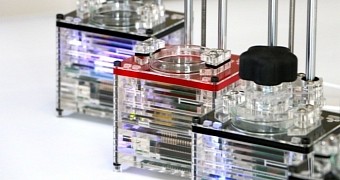For a 3D printer to be considered cheap, it has to sell for around $500 / €500 or less, with the smallest and most modest, tech-wise, FDM models needing only around $250 / €250. However, iBox Printers has just upturned the entire industry.
Why do we say that? Because it has released the iBox Nano 3D printer, whose price is of only $189 / €189, at least for early bird backers on Kickstarter.
Even if you don't participate in the crowdfunding campaign, you won't have to pay more than $229 to $269 / €229 to €269 via retail.
This price would be low enough for an FDM printer, which builds objects drop by drop by melting plastic filament through an extruder. However, the iBox Nano doesn't use such technology. Instead, it employs SLA, or stereolithography.
Why SLA printing at this price is amazing
Amazing is putting it lightly. SLA 3D printing works by bombarding resin (held in a tank) with UV light, curing it and essentially growing the required object.
The result is much more detailed and precise than on FDM printers, and without the inevitable wrinkles and ridges that show where each layer was placed.
SLA 3D printers cost several tens of thousand of dollars for a while, but now they manage to stay below the ten grand mark, and the best consumer-oriented ones managed to sell for less than half of that.
However, they still hold tags several times larger than FDM models. That's why this new iBox Nano is such a game changer: it shows that SLA can run FDM out of business. Then again, the newcomer does have one limitation: it's really, really small.
The iBox Nano 3D printer
The whole thing measures only 4 x 3 x 8 inches / 100 x 75 x 200 mm, meaning that the build volume is of only 40 x 20 x 90 mm / 1.57 x 0.78 x 3.54 inches. The resolution is of 0.39 microns vertically by the way, and the material used is Makerjuice or iBox Reson. Altogether, the product uses 2.7W of energy.
It also has an LCD (the first UV-based one with such a thing) and a 10-hour battery that lets you print stuff on the go. Any device with web connection can control it (PC, phone, tablet, particularly smart smartwatches, even augmented reality headset eventually).
Availability won't come immediately, but shipments should commence in January 2015. They will be carried out in order for the backers of the Kickstarter campaign currently in place.

 14 DAY TRIAL //
14 DAY TRIAL //